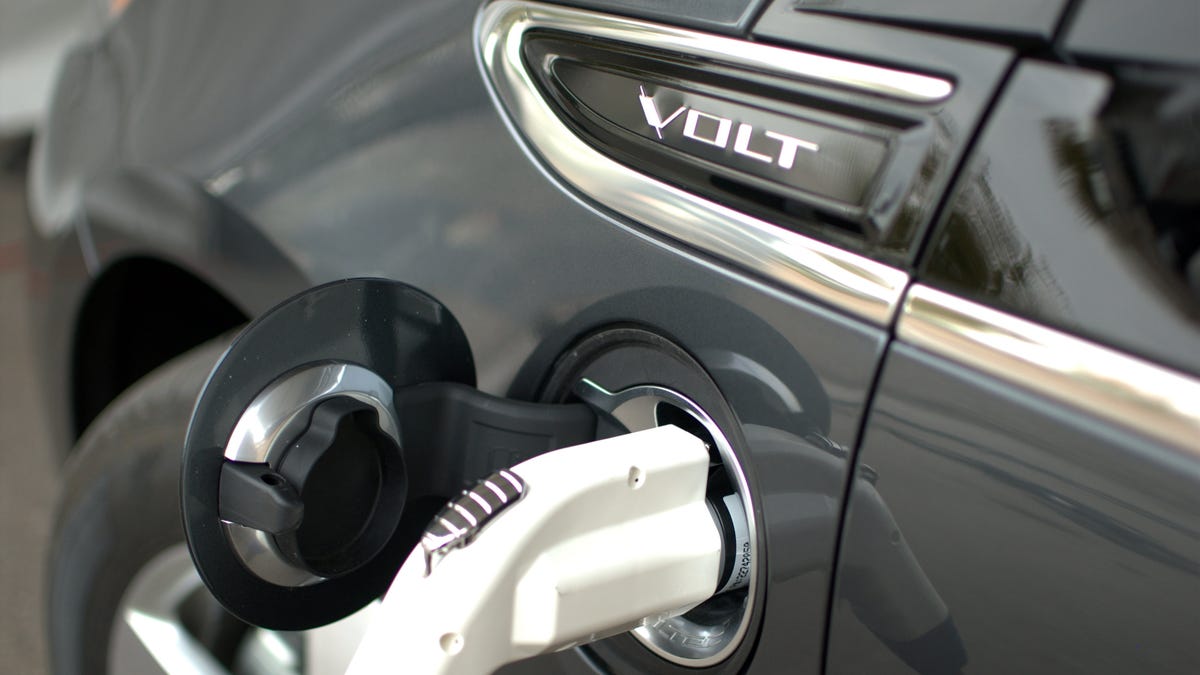What to expect for Chevy Volt mileage
The EPA fuel economy sticker for the gas-electric Volt, about to hit selected markets, is not yet official, but early drivers say your actual mileage will vary greatly.

Now that the electric Nissan Leaf has gotten an official fuel economy rating, all eyes are on the Chevy Volt, the other high-profile electric vehicle soon coming to market. Although there's no definitive rating just yet, Chevy Volt drivers will experience a wide range of mileage regardless of what's on the sticker.
The Environmental Protection Agency is using "miles-per-gallon equivalent" (MPGe) as it top-line metric when evaluating battery-powered cars in order to help consumers make comparisons among gas, diesel, all-electric, and hybrid options.
In the case of the Nissan Leaf, which will be available for sale in certain states next month, that translates to an aggregate 99 MPGe between city and highway driving. The Leaf is also rated "best" for fuel economy and "best" for the environment in the midsize vehicle category.
The Chevy Volt is moved by an electric motor, too, but the power system is a hybrid that uses both a battery and a gasoline engine. It can run between 25 and 50 miles on the 16-kilowatt-hour battery and then a gasoline engine kicks in to run a generator that charges the battery.
So in theory, a driver who stays within the electric driving range of the Volt can get the same fuel economy rating as the Leaf which, according to the EPA's methodology, is about 100 miles per gallon. But once the gas engine kicks in, the car is in "charge sustaining" mode and the miles per gallon will drop to the mid to high 30s, according to GM.
The EPA is likely to include an electric vehicle range with the Volt and an MPGe number that combines all-electric drive and the miles per gallon in charge-sustaining mode, according to GM spokesman Rob Peterson. He said GM is like "an expecting grandparent," waiting to hear the word on the Volt's fuel economy rating before it goes on sale next month.
"It's a fairly complex situation, a complex car, and a complex process by which the EPA is trying to determine mileage," he said. "Charge-sustaining fuel economy is the worst-case scenario because you're making the assumption that the car never charges or your miles per gallon is what you get after the battery depleted."
Early drivers of the Volt have experienced that range of mileage. Motor Trend found that without plugging in, the Volt gets mileage in the high 30s to low 40s.
But when a driver is able to draw mostly from the battery, the mileage changes dramatically for the better. Lyle Dennis, who runs the GM-Volt.com Web site and is an early driver, has been able to charge twice a day and drive almost entirely on the battery, giving him a fuel economy equivalent of 168 miles per gallon equivalent on occasion.
The Volt is designed to tap its internal combustion engine once in a while so that the gasoline and oil don't get stale. About once every 30 days, the car will automatically turn on the engine and cycle through the stored gas, said Peterson.
The ratings for the Volt and the Leaf highlight the difficulty of comparing gasoline-powered cars as new auto technologies are introduced. The EPA, which is in the process of developing new fuel economy labels, uses 33 kilowatt-hours as the equivalent of the energy in one gallon of gasoline to come up with the MPGe. It includes the pollution created by generating electricity to come up with its overall grading on the "best to worst" scale for environment.
But some electric-car enthusiasts argue that fuel economy for electric vehicles should be expressed only using kilowatt-hours, the same unit for energy used on electric bills. So instead of miles per gallon, it would be how many kilowatt-hours are used to go 100 miles, for example. Another suggestion has been cost per mile.
The sticker for the Leaf does indeed include a kilowatt-hour-per-100-mile rating at 34 and an estimated charge time. The Volt, which needs the EPA label before the car goes on sale next month, is expected to use the same format.

